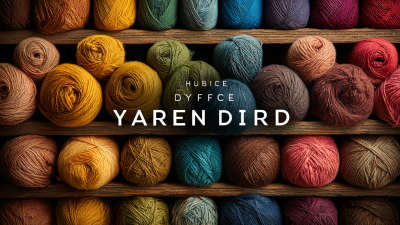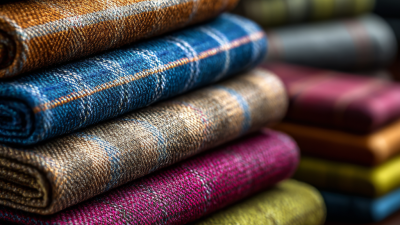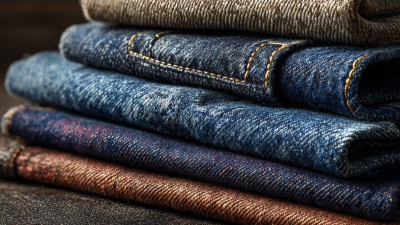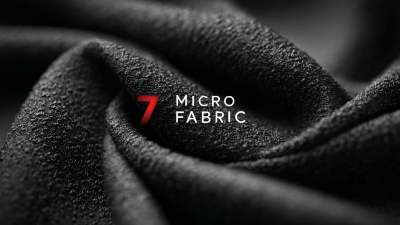Choosing the right Yarn Dyed Fabric is a critical step in the fashion design process, as it significantly affects the overall aesthetic and quality of garments. According to the latest reports from the textile industry, yarn dyed fabrics account for approximately 20% of the global fabric market, demonstrating their popularity due to their vibrant colors, durability, and resistance to fading. The growing demand for sustainable and high-performance textiles has further propelled the interest in yarn dyed options, which are often perceived as eco-friendlier compared to conventionally printed alternatives. As fashion trends continue to evolve, understanding the various characteristics and applications of yarn dyed fabrics becomes essential for designers and manufacturers looking to create innovative and appealing collections. By making informed choices about the types of yarn dyed fabrics available, you can enhance both the functionality and visual appeal of your fashion line.
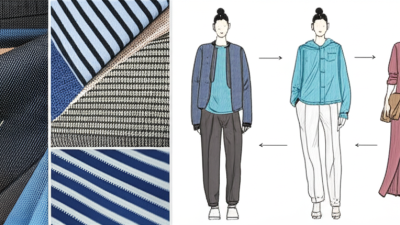
When selecting yarn dyed fabrics for fashion applications, there are several key factors to consider that can significantly influence the final outcome of your designs. The first is the type of fiber used in the yarn. According to a report by the Textile Research Journal, cotton and its blends account for nearly 40% of the fabric market due to their breathability and dye uptake properties. Fabrics like cotton poplin or denim, for instance, provide vibrant color retention, making them ideal for both casual and formal wear.
Another critical factor is the weave structure of the fabric, which impacts the texture and drape. Different weaves, such as twill or sateen, can alter how the fabric interacts with light and movement, providing opportunities for creative expression. As stated in the Fabric Industry Report 2021, 60% of fashion designers prioritize weave types to achieve specific looks and functionalities. Additionally, understanding the fabric's weight and finish is essential; heavier fabrics like canvas offer durability for outerwear, while lighter materials lend themselves to more delicate garments. By considering these factors, designers can ensure the chosen yarn dyed fabric not only meets aesthetic needs but also performs effectively in fashion applications.
| Fabric Type | Weight (g/m2) | Texture | Best Uses | Colorfastness |
|---|---|---|---|---|
| Cotton Twill | 220 | Soft and Durable | Pants, Jackets | Good |
| Linen Blend | 180 | Lightweight, Breathable | Dresses, Summer Wear | Very Good |
| Denim | 350 | Sturdy, Textured | Jeans, Jackets | Excellent |
| Polyester | 160 | Smooth | Sportswear, Activewear | Good |
| Rayon | 200 | Soft, Silky | Blouses, Dresses | Moderate |
When selecting the ideal yarn dyed fabric for your fashion projects, understanding fiber content is crucial. Different fibers possess unique qualities that influence the fabric's performance, durability, and feel. For instance, natural fibers like cotton and linen offer breathability and comfort, making them perfect for warm-weather garments. In contrast, synthetic fibers such as polyester and nylon provide enhanced strength and resistance to wrinkling, which is beneficial for activewear and everyday clothing.
The dyeing process also affects how fibers interact with color, garment care, and aging. Yarn dyeing typically leads to a more vibrant and enduring color compared to fabric dyeing, as the color is embedded within the yarn itself. Additionally, the choice of fiber impacts how the fabric behaves during washing or exposure to sunlight. For example, cotton may fade over time, while synthetic blends are more resilient. By evaluating fiber content in relation to your intended use and aesthetic preferences, you can confidently select the best yarn dyed fabric that meets your fashion needs.
When selecting the best yarn dyed fabric for your fashion needs, understanding the colorfastness properties of these textiles is crucial. Yarn dyed fabrics are known for their vibrant colors and patterns, but the longevity of these colors depends on the dyeing technique used. Recent advances in eco-friendly dyeing processes highlight the importance of sustainable practices in maintaining colorfastness. For instance, innovative methods using natural plant components, such as curcumin from eutectic solvents and dyes extracted from litchi fruit peels, ensure both aesthetic appeal and environmental responsibility.
Additionally, the use of biodegradable natural dyes, as seen in experiments with quinoa plant components and Bombax ceiba flowers, presents a sustainable alternative to synthetic dyes, making them not only eco-conscious choices but also effective in producing lasting, vibrant colors. These eco-friendly techniques enhance the colorfastness of yarn dyed textiles, ensuring that your fashion creations remain striking over time while aligning with sustainable practices. Embracing these innovations may not only elevate the fashion industry’s ecological footprint but also cater to the growing consumer demand for environmentally sustainable options.
When selecting yarn dyed fabric, understanding the weave patterns is crucial for determining the fabric's durability. Various weave techniques, such as plain, twill, and satin, each offer distinct characteristics that affect how the fabric performs.
Plain weaves, known for their simplicity and tight structure, tend to withstand wear and tear better, making them ideal for everyday clothing.
Twill weaves, on the other hand, provide a diagonal pattern that not only adds visual interest but also enhances durability due to their inherent thickness. This makes them suitable for items like trousers or jackets that require a bit more resilience.
Moreover, satin weaves, while luxurious and soft, can be less durable due to their long floats that are prone to snagging. It’s essential to consider these factors when choosing yarn dyed fabric for fashion projects. A fabric's weave can significantly influence its lifespan and usability in various clothing designs. By assessing the weave pattern, designers can select fabrics that not only meet aesthetic preferences but also ensure the longevity and practicality of their creations.
When selecting yarn dyed fabrics for fashion applications, the emphasis on sustainability is more crucial than ever. The textile industry is responsible for approximately 10% of global greenhouse gas emissions, according to the United Nations Environment Programme. Traditional yarn dyeing processes often involve large quantities of water and hazardous chemicals. However, innovative techniques such as natural dyeing and low-impact dyes are gaining traction, offering eco-friendly alternatives that reduce environmental harm while still delivering vibrant colors.
Recent reports indicate that around 40% of consumers now consider the sustainability of textiles when making a purchase. This shift in consumer behavior is encouraging manufacturers to adopt more sustainable practices. For instance, some brands are implementing closed-loop systems in their dyeing processes, which can minimize water usage by as much as 80%. Furthermore, companies that invest in GOTS (Global Organic Textile Standard) certified fabrics not only meet rigorous environmental criteria but also ensure fair labor practices, fostering a more ethical fashion industry. As sustainable yarn dyeing techniques evolve, they will undoubtedly play a pivotal role in shaping the future of eco-friendly fashion.
